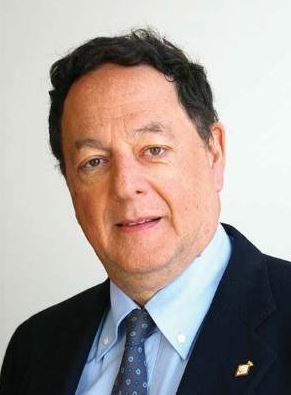An implanted vagus nerve stimulator like that used for epilepsy treatment reduced inflammatory markers and significantly improved symptoms and function in a small cohort of patients with rheumatoid arthritis.
After 42 days, almost 30% of patients had achieved disease remission, Frieda A. Koopman, MD, and her colleagues reported in the July issue of the Proceedings of the National Academy of Science (doi: 10.1073/pnas.1605635113). The improvements disappeared rapidly when the devices were turned off, but were quickly reestablished after stimulation resumed.
“This first-in-class study supports a conceptual framework for further studies of electronic medical devices in diseases currently treated with drugs, an approach termed ‘bioelectronic medicine,’” wrote Dr. Koopman of the University of Amsterdam, and her coauthors.
The team built on evidence of what they termed a “reflex neural circuit” in the vagus that strongly influences the production of inflammatory cytokines. Animal studies showed that electrical stimulation of the vagus nerve encouraged choline acetyltransferase–positive T cells to secrete acetylcholine in the spleen and other tissues. Acetylcholine binds to a class of nicotinic receptors on monocytes, macrophages, and stromal cells, and inhibits their inflammatory response.
“Inflammatory reflex signaling, which is enhanced by electrically stimulating the vagus nerve, significantly reduces cytokine production and attenuates disease severity in experimental models of endotoxemia, sepsis, colitis, and other preclinical animal models of inflammatory syndromes,” the team noted.
The group reported on two human studies, totaling 25 patients. The first comprised seven patients with epilepsy who received the implanted vagus nerve stimulator for medically refractory seizures. None of these patients had a history of RA or any other inflammatory disease. The second group was all patients with active RA.
Each epilepsy patient contributed peripheral blood for study, which was collected before, during and after the implantation surgery. The team studied inflammatory markers by adding endotoxin to the samples. Those collected after the patient had been exposed to a single 30-second stimulation at 20 Hertz showed significantly inhibited production of TNF-alpha, compared with that seen in unexposed blood. Interleukin (IL)-6 and IL-1beta was also inhibited significantly by vagus nerve stimulation.
The next study involved 17 patients who had active RA, but not epilepsy. Of these, seven had failed methotrexate but were naïve to biologics; the rest had failed methotrexate and at least two biologics from different classes. Their average disease duration was 11 years.
The 86-day study gradually titrated the stimulation dose, but even at its highest, stimulation was far less than what is typically employed in epilepsy, “in which current is delivered at 60-second intervals, followed by an off interval of 5-180 minutes, repeated continuously,” the investigators wrote. “Thus, epilepsy patients may receive electrical current delivery for up to 240 minutes daily. Preclinical studies have established that stimulation of the inflammatory reflex for as little as 60 seconds confers significant inhibition of cytokine production for up to 24 hours.”
There was a 14-day post-implantation washout period with no stimulation, followed by 28 days of treatment titration. During that time, stimulation was ramped up from single 60-second stimulation with electric pulses of 250-microseconds duration at 10 Hertz and an output current between 0.25-2.0 milliamps, to the highest amperage tolerated (up to 2.0 milliamps).
That dose was the treatment target, and delivered once daily for 60 seconds in 250-microsecond pulse widths at 10 Hertz. At day 28, patients who had not had good clinical response according to EULAR response criteria, had their stimulation increased to four times daily.
In the group of seven methotrexate-resistant patients, two received electric current pulses four times daily. In the group of 10 methotrexate- and biologic-resistant patients, 6 received the four-dose stimulation.
On day 42, TNF-alpha levels in cultured peripheral blood were significantly reduced from baseline.
At that time, the vagus nerve stimulator was turned off for 14 days. By the end of the silent period, TNF-alpha levels had risen significantly from the day 42 levels. The stimulator was restarted on day 56. By day 84, after 28 more days of stimulation, TNF-alpha levels had again decreased significantly.
Symptoms and function as measured by the Disease Activity Score 28 followed a similar trajectory, improving during the initial treatment, worsening during the period of no stimulation, and improving again when stimulation was restarted. Symptom and function scores correlated positively with change in TNF levels.
The investigators also assessed the response rates according to American College of Rheumatology criteria. At day 42, 71% of those in the methotrexate-resistant group had achieved a 20% response; 57% a 50% response; and 28.6% a 70% response. Response was not as dramatic in the group resistant to both drug classes: rates were 70%, 30%, and 0%.


